CLEVELAND — Northeast Ohio's schools have undergone an unprecedented experiment – as thousands of students started the school year learning in their homes, instead of in the classrooms.
So – is remote learning actually working?
While statewide data is virtually nonexistent, 3News investigator Rachel Polansky began compiling her own data and uncovered a gross disparity between suburban schools and inner city schools.

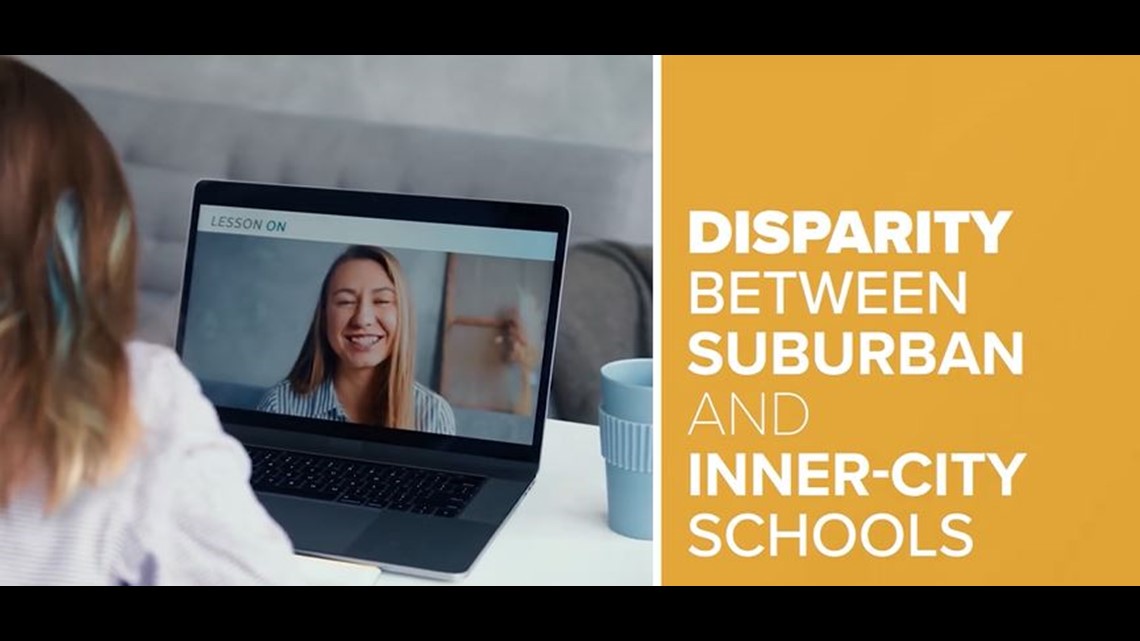
Students weigh in
"It's kind of difficult, learning by myself," Thomas Lee Booker, a freshman at Glenville High School in the Cleveland Metropolitan School District, said. "It's kind of difficult."
"It's good," Abby Miloro, a junior at Normandy High School, in the Parma School District, said in contrast. "It's an adjustment, but its working out."

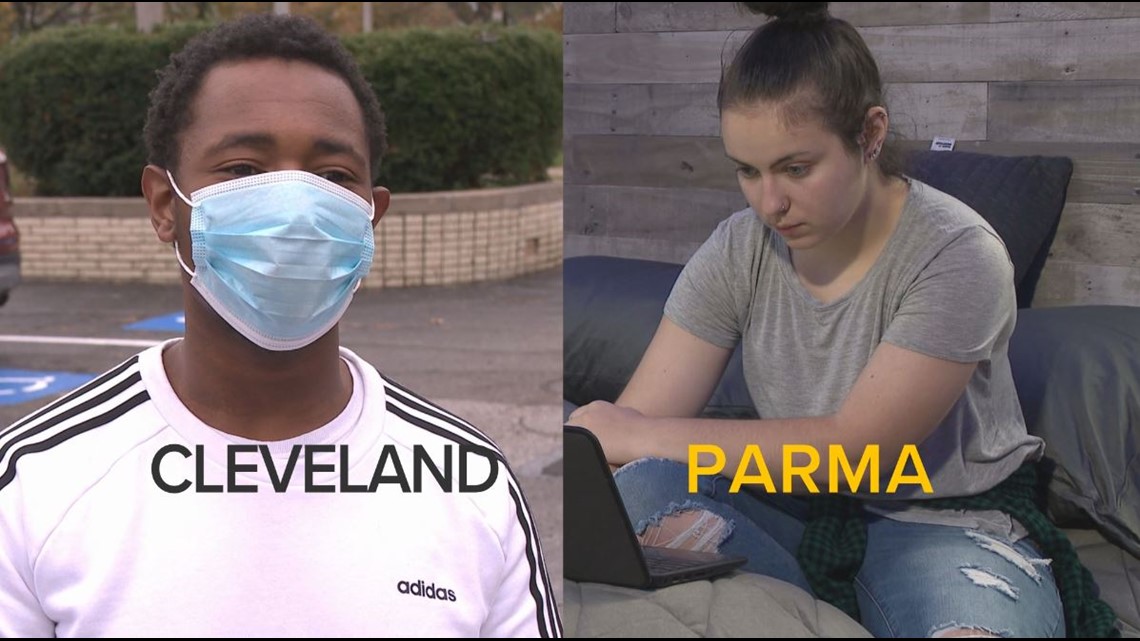
A survey of hundreds of districts around the country exposed students in high-poverty communities were spending less time in their remote classes last spring. A 3News investigation looking at the data from the start of this fall semester suggests that problem still persists in Cuyahoga County, as suburban schools scored higher than inner city schools in one key area: Attendance.
In suburban Parma, where Abby Miloro goes to school, the district is seeing near perfect attendance: 97% logging on at Normandy High and 98% logging on at Parma High School.

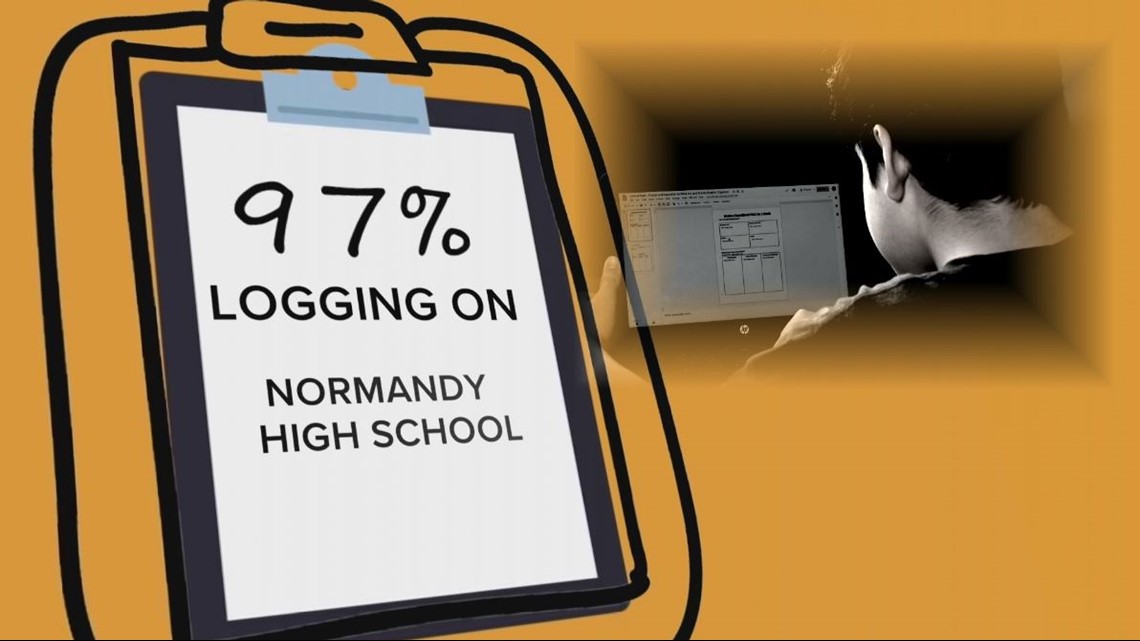
3News Investigates found similar results at Shaker Heights High School, with 96.5% logging on, and Beachwood High School, with 96% logging on.
But in Cleveland Metropolitan Schools, where 37,701 students have been in virtual classes since March, 3News found 85% of students are regularly logging on. That means roughly 5,600 hundred students ,or 15%, are not regularly logging on.

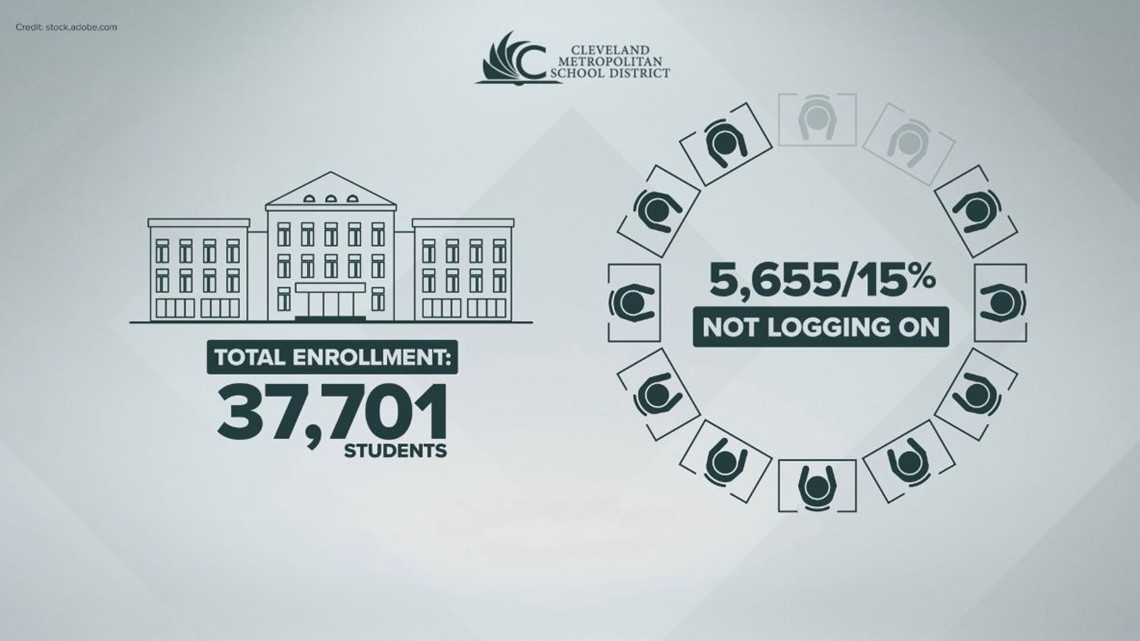
While the CMSD has given students Chrome books and hot spots, Brenda Cook-Weems says her son Thomas often has problems logging on.
“Sometimes the Chrome book goes out," she said. "We've been up here twice to get new Chrome books because this one goes dead."
"How many times has that happened?" Rachel Polansky asked Cook-Weems.
"Twice, this is the second time," said Cook-Weems.
Perhaps even more troubling is Cleveland's high school attendance rates: The most recent data available shows only 63% of students logging on at Glenville High School, Thomas' school. That’s on par with the 64% average attendance at John F. Kennedy High School and 66% at Collinwood High School.

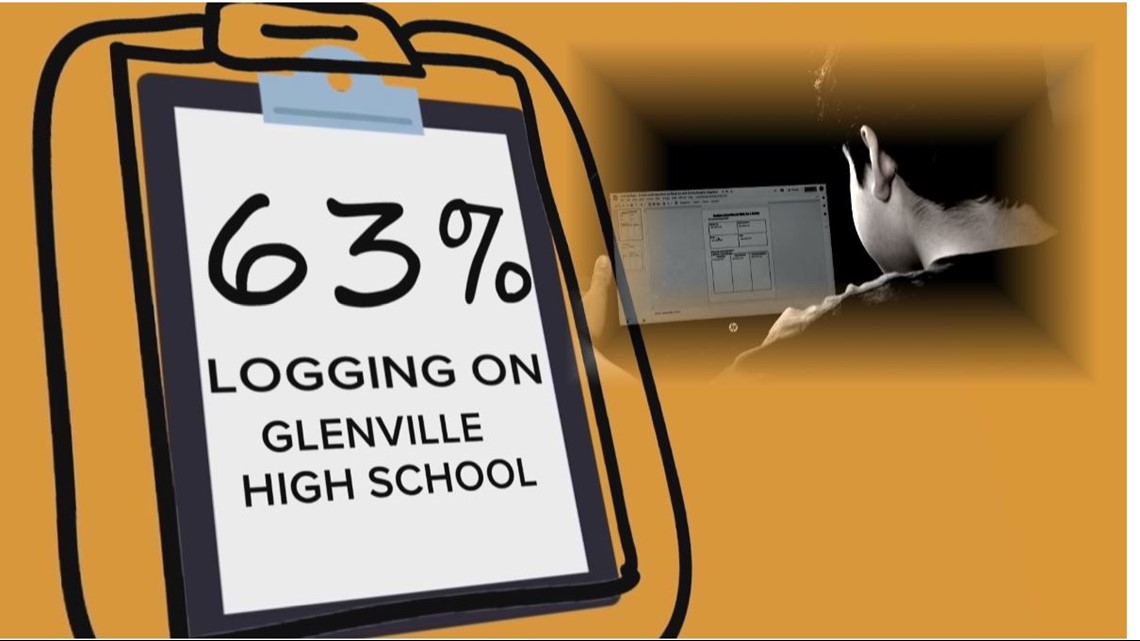
"I am very disappointed," Cook-Weems said of the numbers. "63 percent is not good."
Parents of elementary aged children are also reporting challenges.
“If you don't have anyone at home to help you log on, sometimes it's hard for the kids to log on. By me being at home with him, it’s easier for me to help him because he can't log on on his own,” said Candice Scales.
Scales’ son is in pre-K at Mary B. Martin Elementary in Cleveland. The most recent data available shows 71 percent of students logging on there.
CMSD Responds
"It’s gonna take us some time to recover from this pandemic, which we're not out of yet," Cleveland schools CEO Eric Gordon said, adding he acknowledges the challenges and simply telling us they're working on it.
"Our attendance office is trying to find those kids who are just absolutely not signing on," he said. "When the pandemic is finally over, there is going to be an educational recovery not just in Cleveland, but in the country."
Attendance has always been an issue in the CMSD, where historically 7-8% of students are absent each day.
Northeast Ohio Schools Respond
Parma City Schools Superintendent Charles Smialek said in a statement:
"We check in with students who are not logging in in a variety of ways depending on school size. High schools use a form that their teachers complete and this leads to contact by counselors, assistant Principals, or home liaisons. Elementary and middle school teachers have been texting or emailing the Principal, who then disposes of the same resources. In some cases, we have even had someone go to the student's home to help them troubleshoot."
Beachwood City Schools Superintendent Robert Hardis wrote:
"We are not having any issues with our remote-only students attending each day and turning in assignments. Attendance is taken by our teachers for the students logging in online at all grade levels. If a student is absent from the online class, this is noted and a phone call is made home. If a student does not complete or forgets to complete an assignment, the parent is notified."
From Bay Village City Schools Superintendent Jodie Hausmann:
"All students, whether in-building or elearning submit a health check daily and teachers take attendance via Zoom, so we know students are ready to learn. Our elearners follow a daily schedule and connect via Zoom to their homeroom/course teachers at the same time as when in-building students are attending. This creates an engaging, classroom feel where the educator is teaching elearners at the same time as in-building students. Our team consists of teachers, administrators, school psychologists, and social workers who identify students who are not engaging with elearning. If needs continue, we have parent conferences virtually, and then schedule weekly follow up meetings."
Said Buckeye Local School District Superintendent Patrick Colucci:
"Our teachers are doing daily zoom meetings with all of their classes to monitor attendance. Daily attendance for each period is sent to the office. Our Principal and Assistant Principal record daily period absences on a google sheet. Secretary then enters the daily period attendance in the system. Any student who has 10 missed periods, their parents receive an email. Any student with 20 missed periods receives a warning letter. Any student with 30 missed periods an attendance meeting is held. As of now we have less than 5% of our student population that is at 20 or more missed periods."
West Geauga Local Schools Assistant Superintendent Nancy Benincasa said:
"Students that don't sign on, check in with teachers, or complete assignments are marked absent. The district follows the same procedures we have in place for truant students both attending school in person or virtually. Occasionally, virtual learners experience difficulty with technology and/or internet access. When this happens, teachers and staff work with families to ensure that students have access to instruction and are able to complete classroom work which may count toward virtual attendance days."
Finally, Elyria City School District Director Amy Higgins told us:
"In Elyria, about one-third of our student population (approximately 2,000) is enrolled in the Virtual Academy. Following up on students who may not be completing assignments and the necessary steps for logging in, we are trying to make direct contact via phone and home visits and sending truancy letters as appropriate."

